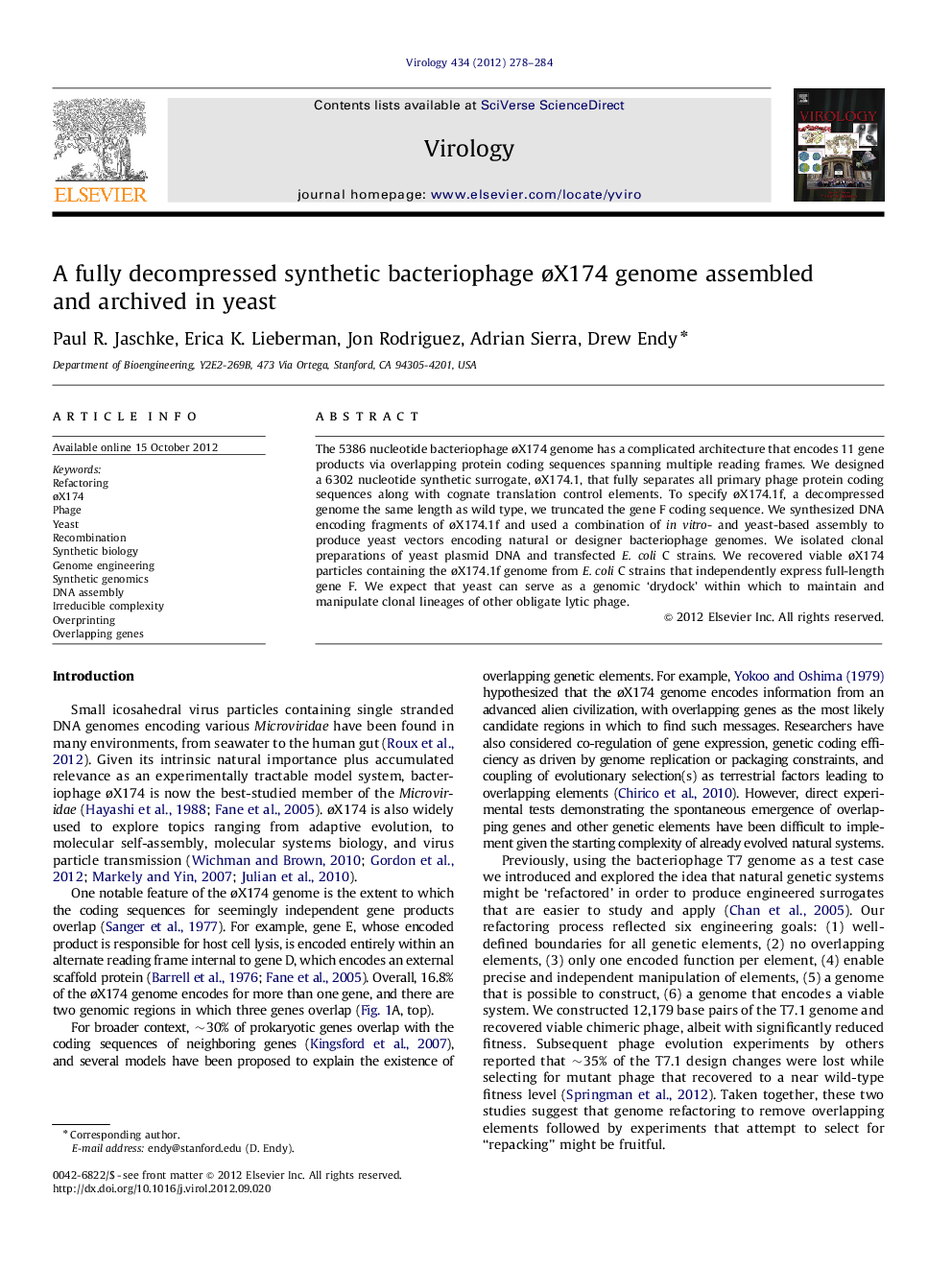| Article ID | Journal | Published Year | Pages | File Type |
|---|---|---|---|---|
| 3424288 | Virology | 2012 | 7 Pages |
The 5386 nucleotide bacteriophage øX174 genome has a complicated architecture that encodes 11 gene products via overlapping protein coding sequences spanning multiple reading frames. We designed a 6302 nucleotide synthetic surrogate, øX174.1, that fully separates all primary phage protein coding sequences along with cognate translation control elements. To specify øX174.1f, a decompressed genome the same length as wild type, we truncated the gene F coding sequence. We synthesized DNA encoding fragments of øX174.1f and used a combination of in vitro- and yeast-based assembly to produce yeast vectors encoding natural or designer bacteriophage genomes. We isolated clonal preparations of yeast plasmid DNA and transfected E. coli C strains. We recovered viable øX174 particles containing the øX174.1f genome from E. coli C strains that independently express full-length gene F. We expect that yeast can serve as a genomic ‘drydock’ within which to maintain and manipulate clonal lineages of other obligate lytic phage.
Graphical abstractFigure optionsDownload full-size imageDownload high-quality image (397 K)Download as PowerPoint slideHighlights► Bacteriophage genomes can be assembled and archived in yeast. ► A first fully decompressed phage genome is viable and not irreducibly complex. ► A øX174 gene F deletion can be complemented in trans.
